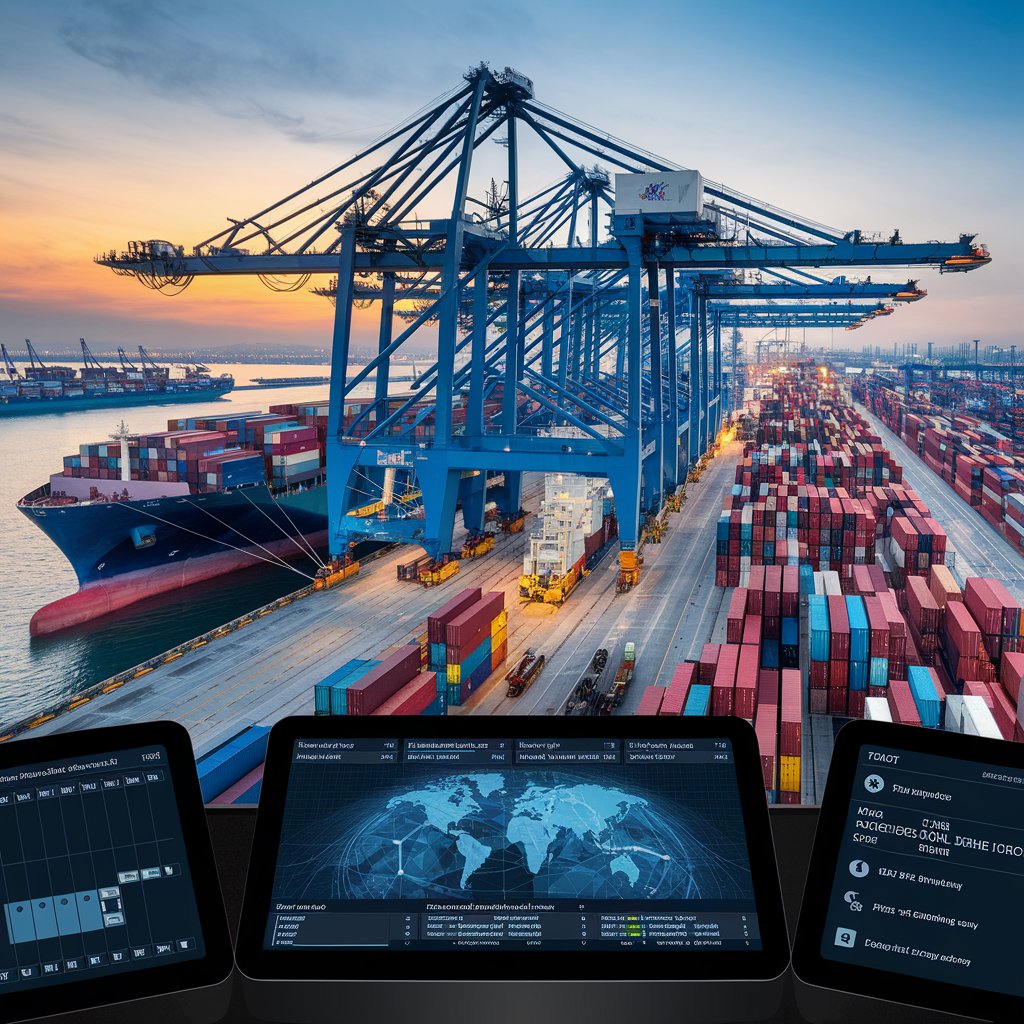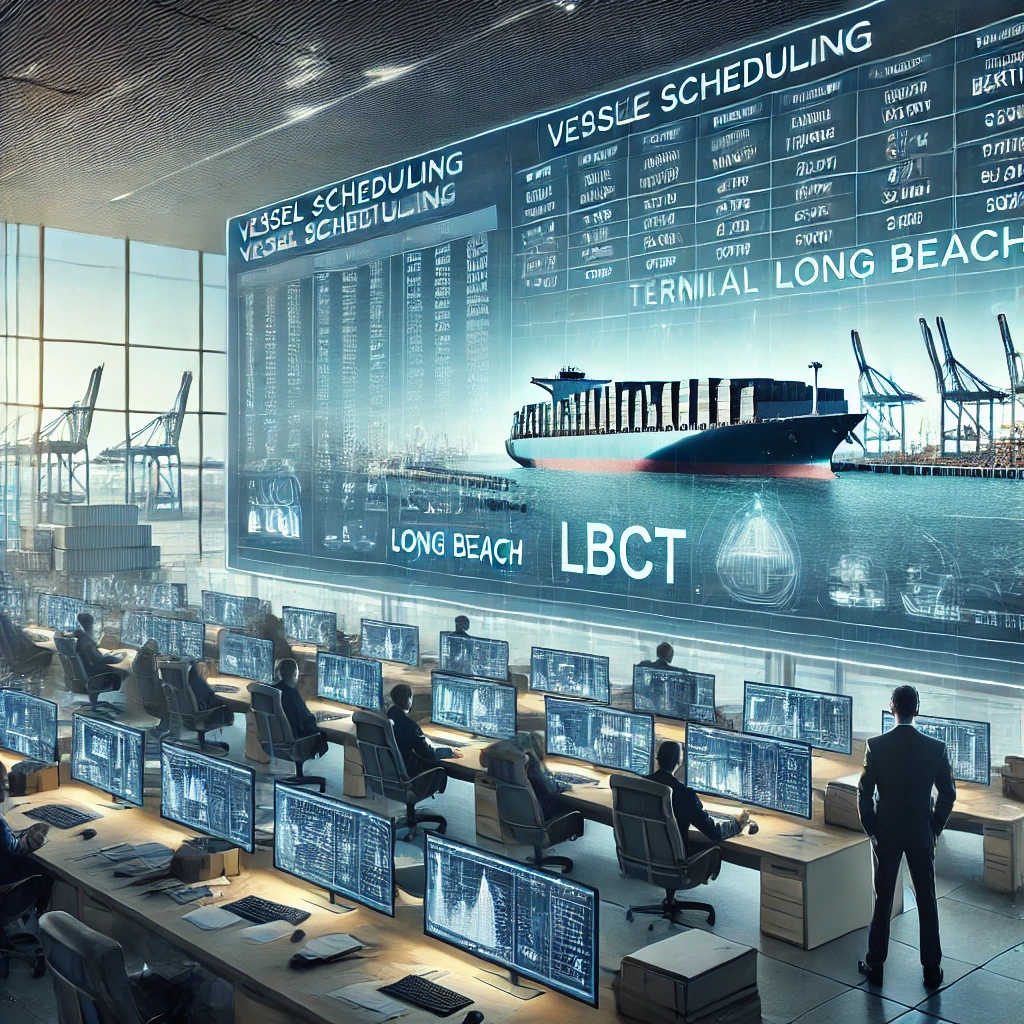LBCT Terminal Long Beach: A Comprehensive Guide to Port Operations and Container Tracking

Understanding LBCT Terminal Long Beach
LBCT terminal Long Beach, also known as Long Beach Container Terminal, is a state-of-the-art facility located at the Port in California. As a key component of the port’s infrastructure, LBCT terminal handles a significant portion of container traffic entering and leaving the United States West Coast.
Key Features
- Advanced Technology: LBCT terminal Long Beach utilizes cutting-edge automation and digital systems to streamline operations and enhance efficiency.
- Strategic Location: Situated in the heart of Long Beach port terminals, LBCT offers excellent connectivity to major transportation networks.
- High Capacity: The terminal can handle large volumes of containerized cargo, making it a preferred choice for shipping lines and logistics providers.
- Environmental Sustainability: LBCT terminal Long Beach is committed to reducing its environmental impact through various green initiatives.
LBCT Terminal Long Beach Container Tracking
One of the most critical services offered by LBCT is container tracking. This feature allows shippers, consignees, and logistics providers to monitor the status and location of their containers in real-time.
How to Use LBCT Container Tracking
- Visit the official LBCT terminal Long Beach website.
- Look for the “Container Tracking” or “Track & Trace” option.
- Enter your container number or booking reference.
- Click on the “Track” button to view the current status of your container.
LBCT container tracking provides valuable information such as:
- Container location
- Estimated time of arrival (ETA)
- Customs clearance status
- Container availability for pickup
For more detailed tracking information, you can use the Long Beach container terminal tracking system, which offers additional features and data points.
LBCT Terminal Availability
Checking LBCT terminal availability is crucial for efficient cargo planning and pickup. The Long Beach container terminal availability system provides real-time updates on:
- Gate hours
- Equipment availability
- Container yard capacity
- Vessel schedules
Shippers and truckers can access this information through the LBCT login portal, ensuring smooth operations and minimizing delays.
LBCT Vessel Schedule
The LBCT vessel schedule is an essential tool for planning shipments and managing supply chain operations. This schedule provides information on:
- Arriving and departing vessels
- Estimated times of arrival and departure
- Berth assignments
- Cargo cut-off times
To access the LBCT ship schedule, visit the official LBCT terminal Long Beach website and navigate to the “Vessel Schedule” section.

Operations
LBCT terminal Long Beach operates as a hub for various shipping activities, including:
- Container loading and unloading
- Transshipment operations
- Customs clearance
- Container storage and maintenance
The terminal’s advanced infrastructure and efficient processes contribute to its status as a leading facility within the Long Beach port terminals network.
LBCT Terminal Tracking Systems
LBCT terminal tracking systems play a crucial role in maintaining visibility throughout the supply chain. These systems include:
- LBCT terminal container tracking
- LBCT tracking for specific areas like WAC8 terminal tracking
- Long Beach port container tracking for a broader view of port operations
These tracking systems ensure that stakeholders have access to real-time information about their cargo, enhancing decision-making and operational efficiency.
The Importance of LBCT in the Long Beach Container Port Ecosystem
Long Beach is a vital component of the larger Long Beach container port ecosystem. Its strategic location and advanced capabilities make it an essential link in the global supply chain. Some key points to consider:
- Economic Impact: LBCT contributes significantly to the local and national economy by facilitating trade and creating jobs.
- Technological Innovation: The terminal serves as a testbed for new technologies in port operations and container handling.
- Capacity Enhancement: LBCT’s operations help increase the overall capacity of the Long Beach port terminals network.

LBCT Terminal Long Beach vs. Other Port of Long Beach Terminals
While LBCT is a major player, it’s important to understand how it compares to other terminals within the Port of Long Beach:
- Size and Capacity: LBCT is one of the larger terminals, offering significant container handling capacity.
- Automation Level: LBCT leads in automation and digital integration compared to some other terminals.
- Specialized Services: Each terminal may offer unique services, with LBCT focusing on efficient container operations.
Long Beach Container Terminal Tracking: Beyond LBCT
While LBCT terminal Long Beach offers robust tracking capabilities, it’s worth noting that other terminals within the Long Beach container port also provide tracking services. These include:
- ITS Long Beach tracking
- WBCT tracking
- Long Beach port vessel schedule tracking
Each of these systems contributes to the overall efficiency of the Port of Long Beach terminals.

The Future of LBCT Terminal Long Beach
As global trade continues to evolve, LBCT terminal Long Beach is poised to adapt and grow. Some future developments may include:
- Increased automation and AI integration
- Expansion of container handling capacity
- Implementation of more sustainable practices
- Enhanced integration with other Long Beach port terminals

Conclusion: The Vital Role of LBCT Terminal Long Beach
In conclusion, LBCT terminal Long Beach stands as a cornerstone of modern maritime logistics. Its advanced tracking systems, efficient operations, and strategic location within the Long Beach container port make it an indispensable asset for global trade. Whether you’re tracking a single container or managing large-scale shipping operations, understanding the capabilities and systems of LBCT terminal Long Beach is crucial for success in today’s interconnected world of commerce.
By leveraging the power of LBCT container tracking, staying informed about LBCT terminal availability, and utilizing the comprehensive LBCT vessel schedule, stakeholders can optimize their supply chain operations and navigate the complexities of international shipping with confidence. As LBCT continues to evolve and innovate, it will undoubtedly play an even more significant role in shaping the future of global trade and port operations.
